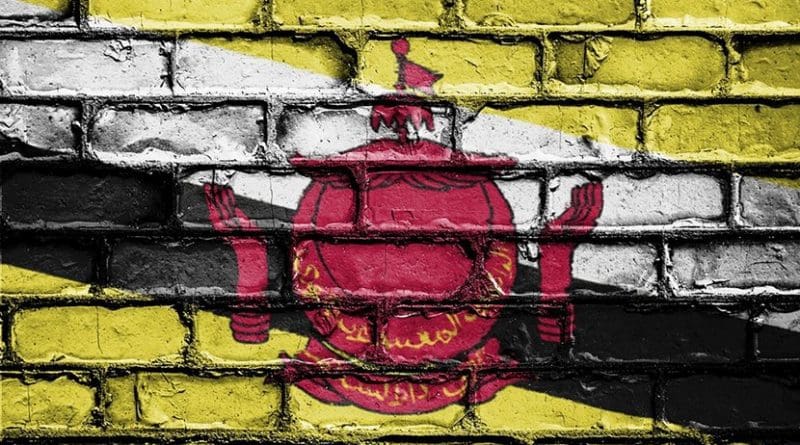Bio-Wealth Of Indigenous Dusuns Of Brunei – OpEd
Brunei is a country holding perhaps the richest pharmacy in the world — located in its forests. It also holds secrets in unravelling cures of many incurable diseases in the world.
This is a partial finding of three important scientists who did a study of The Ecology and Ethnobiology of Human-Rainforest Interaction in Brunei (a Dusun Case Study) namely Assistant Professor Jay H Bernstein of the City University of New York; Professor Roy Ellen of the Department of Anthropology, Human Ecology and Ethnobotany, University of Kent; and Bantong Antaran, Director of the Brunei Museums.
Among the findings of the three were that, the Dusuns, one of a number of ethnic groups in the country, have been using many botanical plants that are used as medicine, food and material for subsistence.
For one, the scientists said several plants under the Aquilaria (or Garu) and Piperaceae (or Akau daiang) families which the Dusuns sell to the Chinese, are used as medicine to treat many diseases.
These are Peperomia obtussifolia, P scandens, P nivences, P pellucida, Piper solmsianum, Piper negrum, and Piper methysticum, used to cure malaria, leukemia, weight loss, vaginitis, trachoma, headache, snake venom, fever and stomach ache.
The findings include listing of plants used as food (mainly edible fruit) and stimulants and as many as 105 plants used for flavouring. Fruit trees not cut down for timber by the Dusuns have other purposes. Some 66 other plants provide edible leaves, roots, stems and shoots.
The Dusuns collect fruits and some forest products (food, and even decorative plants) which are sold at weekly markets in various parts of Brunei or at roadside stalls. The most common are palm and bamboo shoots, Gnetum leaves, various mushrooms and rattan used in the manufacture of carrying baskets and fish traps.
The three researchers discovered that Dusuns use some 62 other medicinal plants for treating ailments ranging from ringworm to leprosy, high blood pressure to poison antidotes like Kapanas (Goniothalamus veluntinus).
The said researchers detailed notes on the conditions for which the plants are used and on mode of preparation. Some of the medicinal plants are hitherto unknown to science, such as garoncong.
In addition, the study — which conducted the project at Tasek Merimbun in the Tutong District, the Brunei Museum being the official sponsor and institutional collaborator — also discovered eight plants like jimpalang (Vitex vestita), believed to increase rice crops and hence planted alongside fields. It is also a source of anti-inflammatory drugs.
Also discovered were six plants used as poisons like binakalud (Brucea sumatrana), seven plants used for pest control, two for fire-making, four with decorative uses, three for seed saving, 16 for firewood, three for dyes, three for fish bait, and one for curing tobacco.
It is interesting to note however that the astringent seeds of Brucea sumatrana are used to treat dysentery according to the Southeast Asia Medical Handbook.
Other findings of the study discovered that 47 trees were indicated as providing wood for construction. Trees were graded by hardness as kodo (hard), sodong kodo (medium hard), and iami (soft). Both hard and soft woods are useful; while medium hard woods are the least useful. Another characteristic used in evaluating wood is liot (flexibility). Many uses of woods were described, many of them highly specific, such as the use of Brackenridgea for axe handles, and Cyrtostachys renda for flooring. Some 67 plants were recorded as having some manufacturing use.
The study intends to document the significance of rainforest resources and the ecological opportunities presented by rainforest in the social lives of the Dusun people of Brunei. It also analysed patterns of human-rainforest interaction, in particular the construction and management of environmental knowledge in changing circumstances.
The main sociological outcome of the research determined how ethnobotanical and ethnoecological knowledge alters as a result of rapid socio-cultural change, especially in situations where forest and existing biodiversity have been maintained.
Although knowledge of the forest environment to have been always asymmetrically distributed within a population, the disjunction at the present time between what is known by a few older men and the mass of younger people is sharply accentuated today, the study said.
The reason is that there is a general reduction in the use of the Dusun language (and its replacement by Brunei Malay) and of traditional ritual practices, to such an extent that combined with exogenous market and political forces, including dependence on a public sector economy, influence of the national ideology of Melayu Islam Beraja (Malay Islamic Monarchy) and general absorption into Malay culture, the future existence of a clearly demarcated Dusun identity is in doubt.
It is evident that the symbolic and general cultural associations of the forest are changing amongst both Dusun and Brunei Malay as the forest declines in economic importance and all Bruneians are absorbed into a peri-urban way of life, the study concluded.

